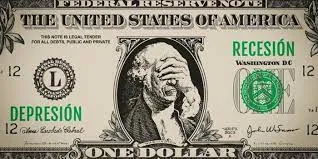
Despite the positive messages coming from central bankers worldwide and the prevailing optimism, it's evident that the global economy is teetering on the brink of a dreaded recession, with the ominous specter of a 'Depression' looming on the horizon. Central banks find themselves in a fresh quandary, unsure of the best course of action.
It's a normal occurrence for any economy to cool down after a period of prosperity as part of the economic cycle. Typically, the economy would naturally transition into the next phase of this cycle. However, this time, the cooling is a result of factors such as the increased money supply during the pandemic, disruptions in major supply chains due to the Russia-Ukraine war, global trade sanctions, and more. Inflation has surged on a global scale, forcing central banks to consider raising interest rates to levels previously unimaginable.
Just as macroeconomic data indicated falling inflation, declining demand, and a subdued economy, central bankers contemplated reducing interest rates to stimulate demand. But once again, inflation reared its head. Oil prices are on the rise, U.S. oil inventory is at its lowest point in 40 years, producers are cutting supply, export barriers exist in major exporting nations, and China is experiencing deflation, among other challenges.
Central bankers now find themselves in a predicament. Further rate hikes could almost certainly trigger a severe economic depression, while rate cuts may only worsen inflation. Historically, such dilemmas have typically resulted in either a depression or stagflation.
Let's reflect on the 1970s. During that decade, the U.S. experienced growing federal budget deficits due to increased military spending, the Great Society Policy, poverty-fighting stimulus measures, and the collapse of the Bretton Woods system. The Arab Oil embargo nearly tripled oil prices, with crude oil reaching as high as $125 per barrel. Soaring energy prices fueled a wage-cost price spiral and widespread price increases across the global economy. Frequent recessions led to rising unemployment without alleviating inflation.
In an attempt to curb inflation, the Federal Reserve, under Volcker, raised the Effective Federal Funds Rate to as high as 20% before subsequently aggressively reducing rates.
Recessions typically last from 1.5 to 4 years, depending on the efficiency of the economy. Stagflation, on the other hand, typically endures for 7 to 10 years, again contingent on economic efficiency. Depressions, the most severe scenario, can last for more than a decade.